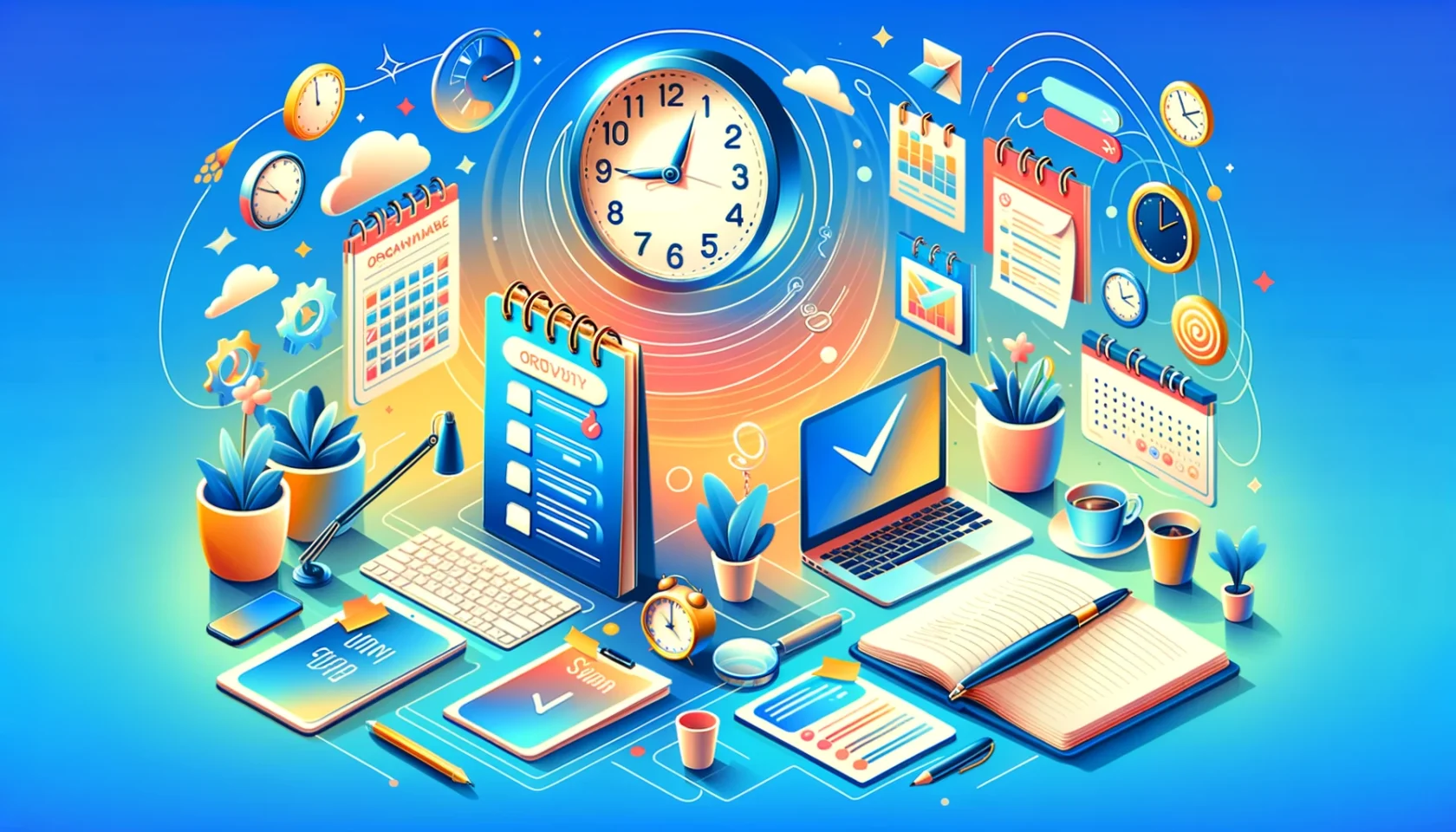
Freelancers and digital agencies carry the burden of managing multiple projects. One needs to be organized to stay on top of projects, coupled with the best strategy and tools. So here are the 10 best things to do to stay on top of projects, with a special focus on how SuperOkay, our client portal app, can make a significant difference.
1. Start Using a Client Portal
The first thing you’ve got to do to learn how to stay on top of your projects for real is to use a portal for your clients. A client portal—like SuperOkay—literally paves the way for freelancers and digital creative agencies by providing an all-in-one platform that streamlines the management of projects. In reality, SuperOkay is really designed for the world’s busiest professional. What’s more, SuperOkay bundles a great set of powerhouse project management features to include task management, file sharing, and deep branding—all combined in one place.
Just imagine all activities related to your project using just one easy-to-use platform. SuperOkay enables you to create and assign tasks and set deadlines (known as Action Items), and even track activity instantly (through our Project Timeline). No scattered emails or missed messages; everything is in one place. The file-sharing feature enables sharing such that all the needed documents are not only accessible to everyone on the project (you, your team and your clients) but clear and separated into folders managed by you, thus eliminating any kind of confusion and inefficiency from the traditional ways of digital communication.
SuperOkay will enable you to give feedback to clients promptly and keep them updated on the status and progress of the project (through the document approval feature). The aim of SuperOkay’s client portal is to make your digital life better, with a smooth and organized system of communication that makes sure nothing at all falls through the cracks. In your workflow, you will take very strong control of the projects, with lots of these features literally right there, to get better productivity and a finer professional image, with our deep customization modules, while ramping up client satisfaction levels. SuperOkay is definitely a must-have in this day and age, as managing diverse projects and diverse clients can definitely be a challenge.
You can try SuperOkay for free, as we offer a completely free tier that offers 1 Client Portal free forever, so sign-up today and start making your work life smoother and easier.
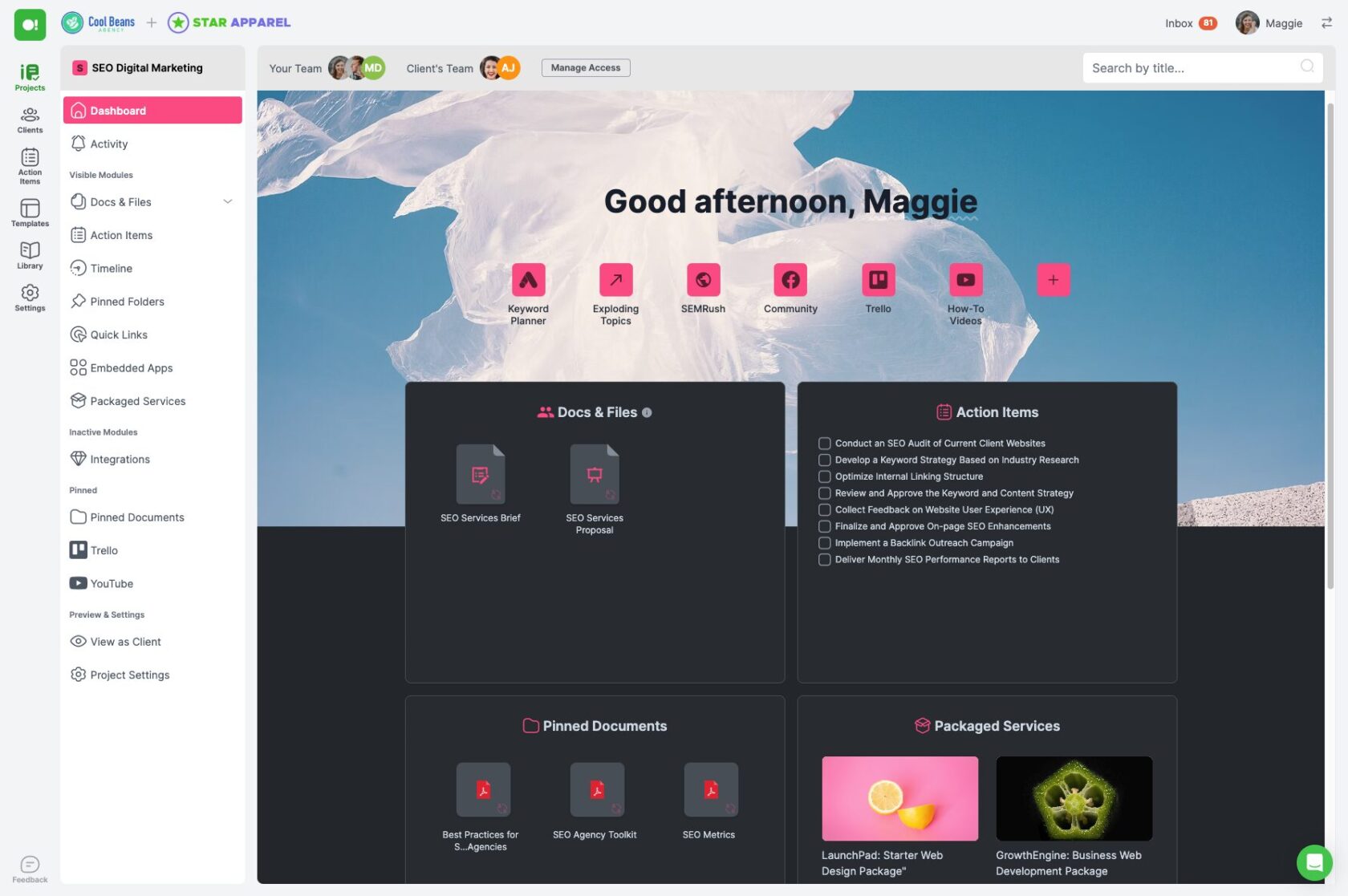
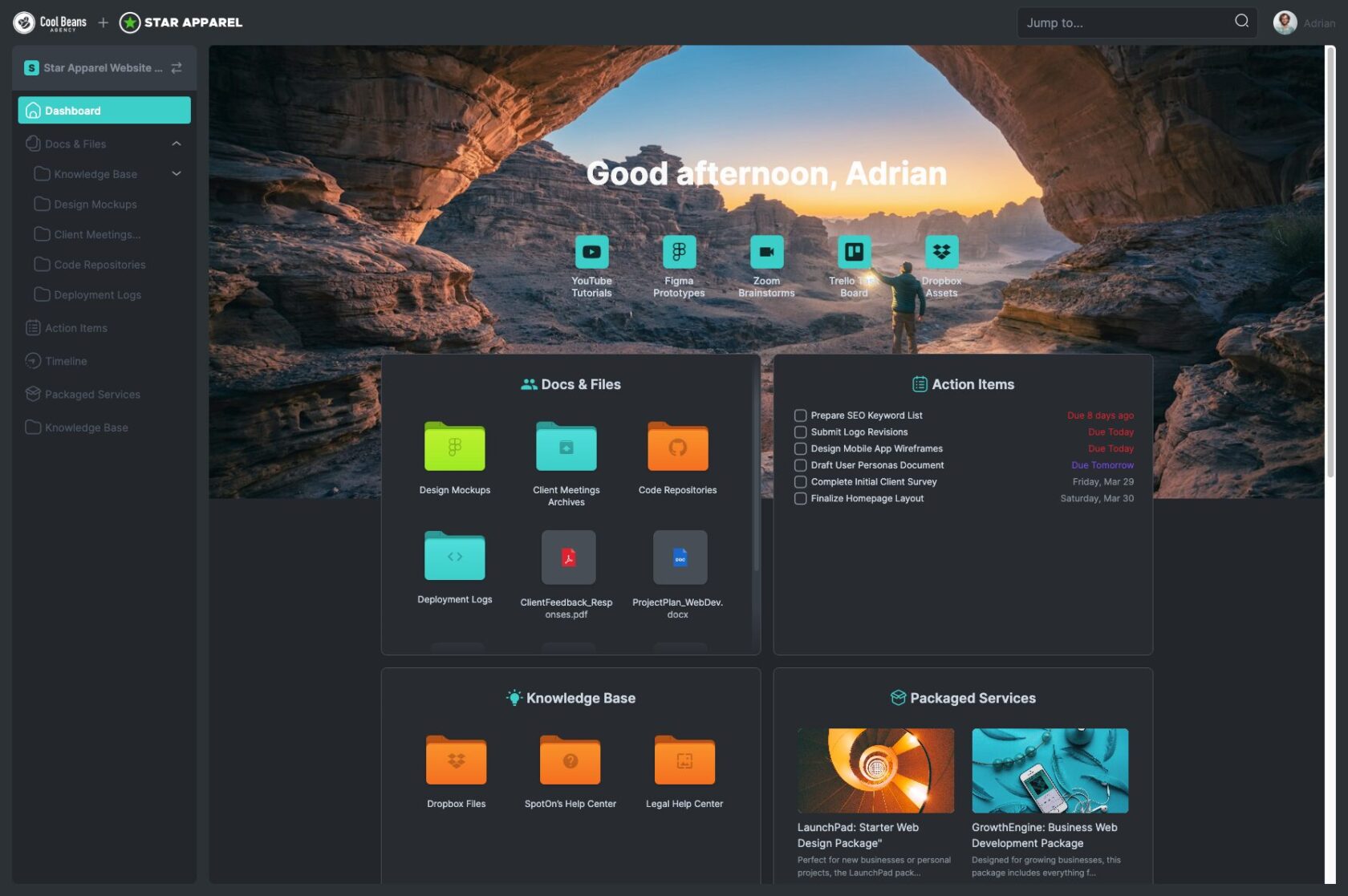
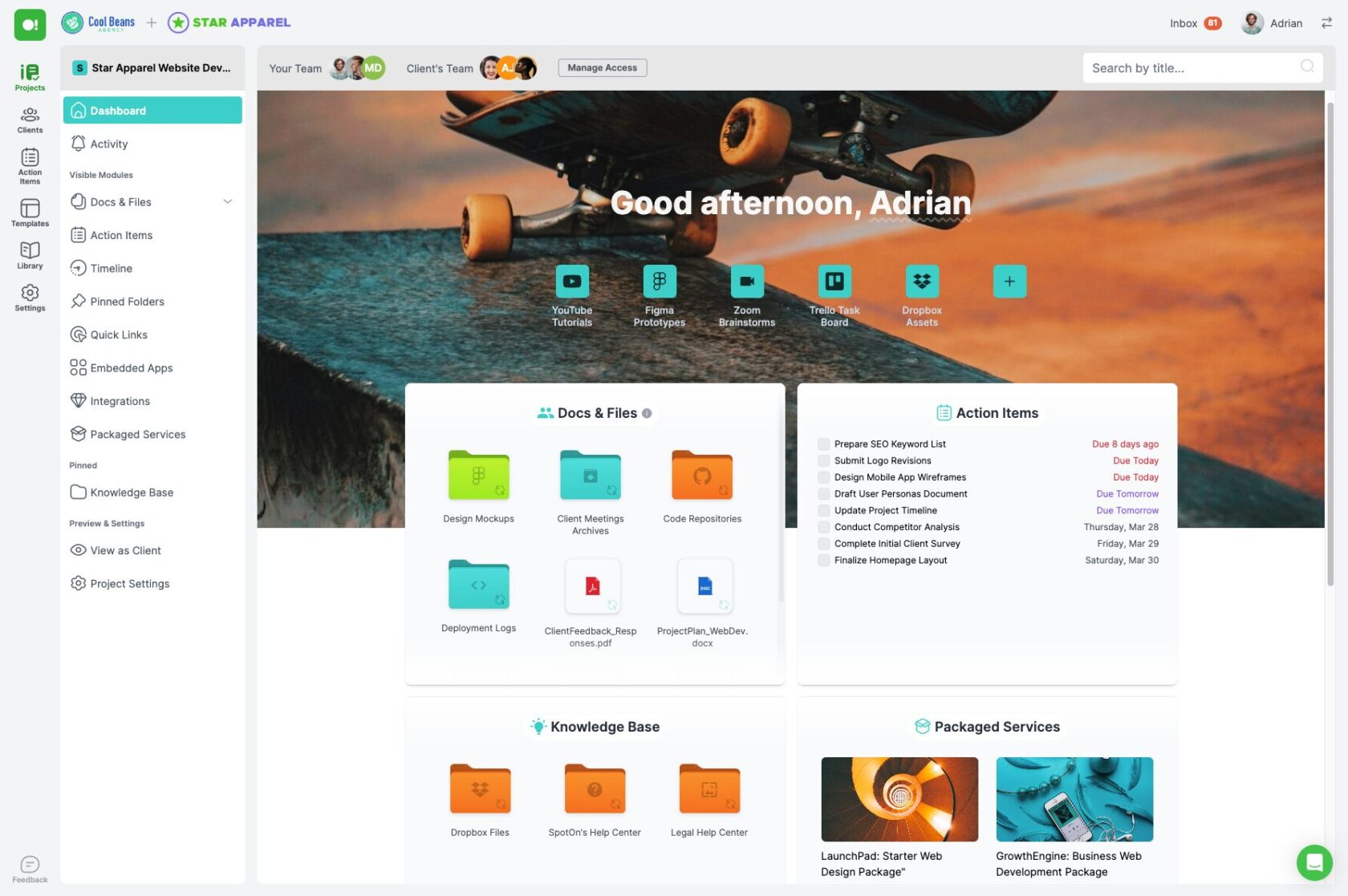
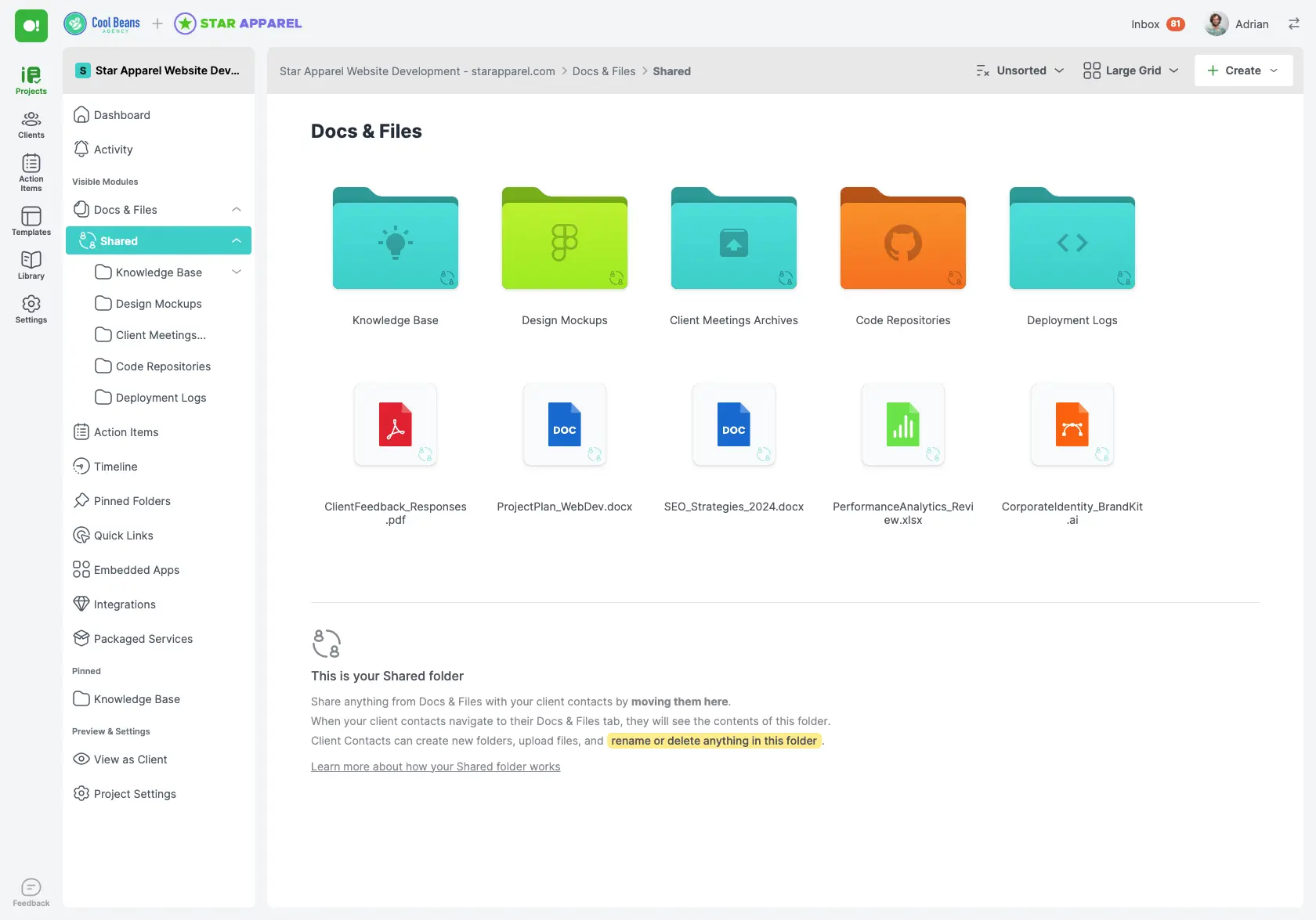
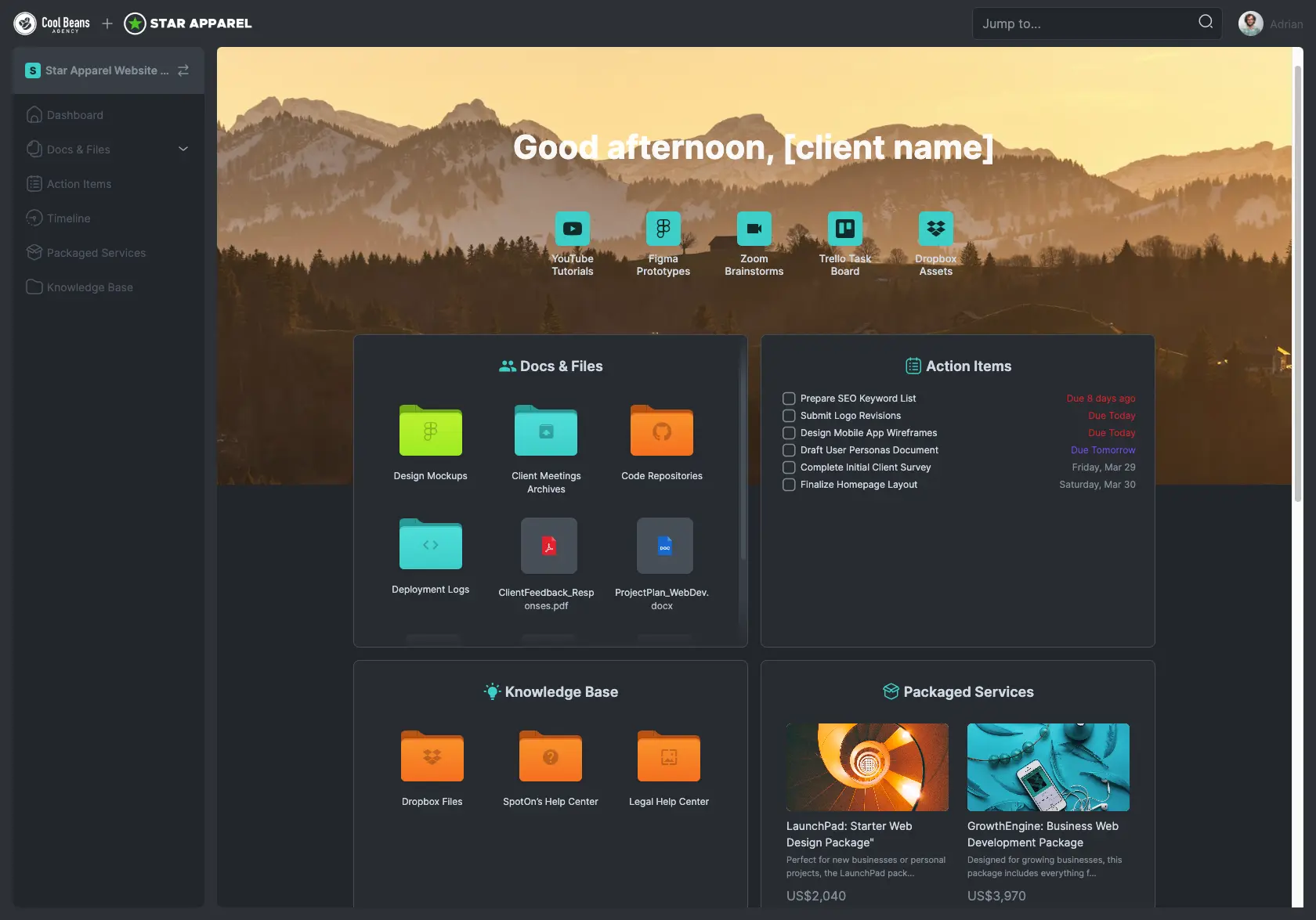
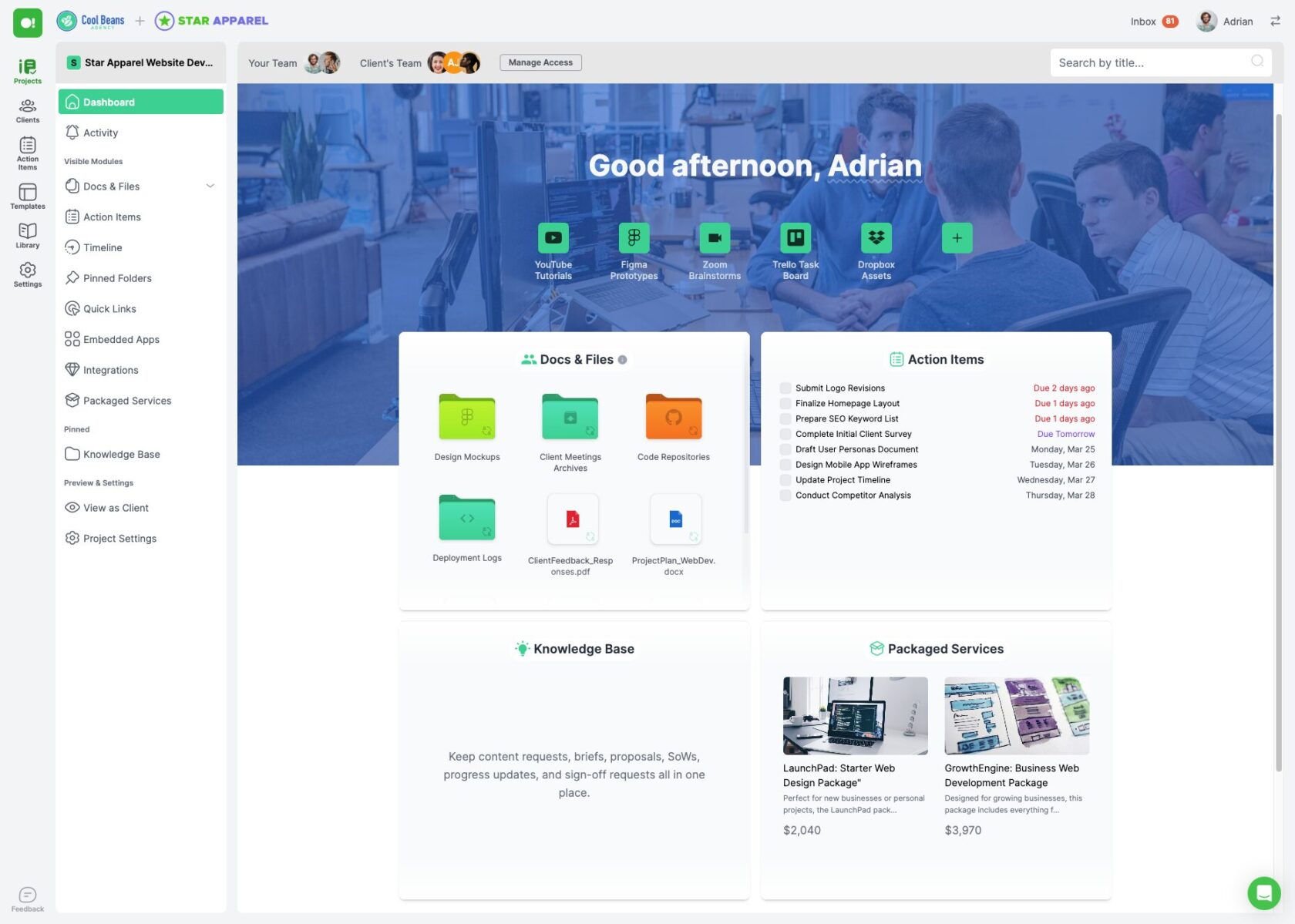
2. Set Clear Project Goals and Objectives
One of the most important elements in learning how to stay on top of projects is setting clear goals that can be realistically achieved. Poorly defined goals can actually cause a project to run out of control quite quickly and begin to become aimless, wasting time and not hitting deadlines. So, be clear about what, exactly, you will want to achieve with each project, and invest some time in outlining the specific outcomes first—then break them down into doable and achievable steps.
They are of no value if not well-communicated amongst your team and to your clients. Explain clearly what the purpose of the project is and the role that everyone has in its achievement to build common responsibility and engagement. That elaborate set of goals says to each team member what is expected of them and how their contribution fits in with the big picture.
Clear objectives also outline a way to establish progress and success. They give a point of reference regarding how far to track advancement or, if need be, challenges that may arise along the way, that would require certain decisions to allow for adjustments. It will be important to revisit these goals often in the life of the project to ensure that everyone stays aligned and focused on the end game.
Clarity is another objective achieved from well-defined objectives that reduce confusion and vagueness. Expectations must be clear and well- articulated without a chance of being misunderstood; clients also benefit since clarity enables them to identify well what to expect and therefore give highly accurate and timely feedback. This, therefore, makes the setting of the goals and objectives for a project not just a plan but the framework that binds the respective efforts and stakeholders with a common purpose. This clarity in goals allows easier workflows, better outcomes, and hence more satisfaction for the team and the client. Laying down of goals and their communication creates the basis on which a structured, focused, and, in the end, successful project is created.
3. Create a Detailed Project Plan
A good project plan is more of a road map for your project, leading your team from the first step to the last with clarity and precision. A plan from the first germ to the completion of the project should be detailed. Identifying the key tasks involved and breaking it down into smaller, chewable components would be the first step. This granularity should ensure that you have covered each and every eventuality.
Once all the roles are defined, delegate them to the specific people in the team as per their competence and abilities. Clear delegation of tasks ensures every member comes out knowing the things they’re responsible for and how it adds value towards the project. This clarity ensures accountability and makes team members own their tasks so they can work better.
Also, an integral part of a detailed project plan is to set realistic deadlines in each task and the overall project. Setting up deadlines allows the project to be kept on track, ensuring there is a steady, consistent flow of progress. Anticipate potential roadblocks, and leave some wiggle room in your plan for when things may take longer than expected. Regularly revisit these deadlines with your teams to ensure their feasibility and reflect on necessary adjustments in order to keep the progress of the project moving. In this step, you’ll be able to determine your requirements for the task: manpower, equipment, software, or a budget. Allocated resources can prevent hold-ups and ensure that every specification of the project is ready to perform.
A well-thought-out project plan ensures that everybody knows what is expected of them and therefore shows how guided the progress is against the project timeline. A smooth flow of work isn’t all it means; it also ensures that any issues likely to arise are detected in time to address them.
A well-detailed project plan helps lead to a successful project. It subdivides a complex, multifaceted project into a set of smaller tasks, each specific and limited in time with regard to responsibilities and deadlines.
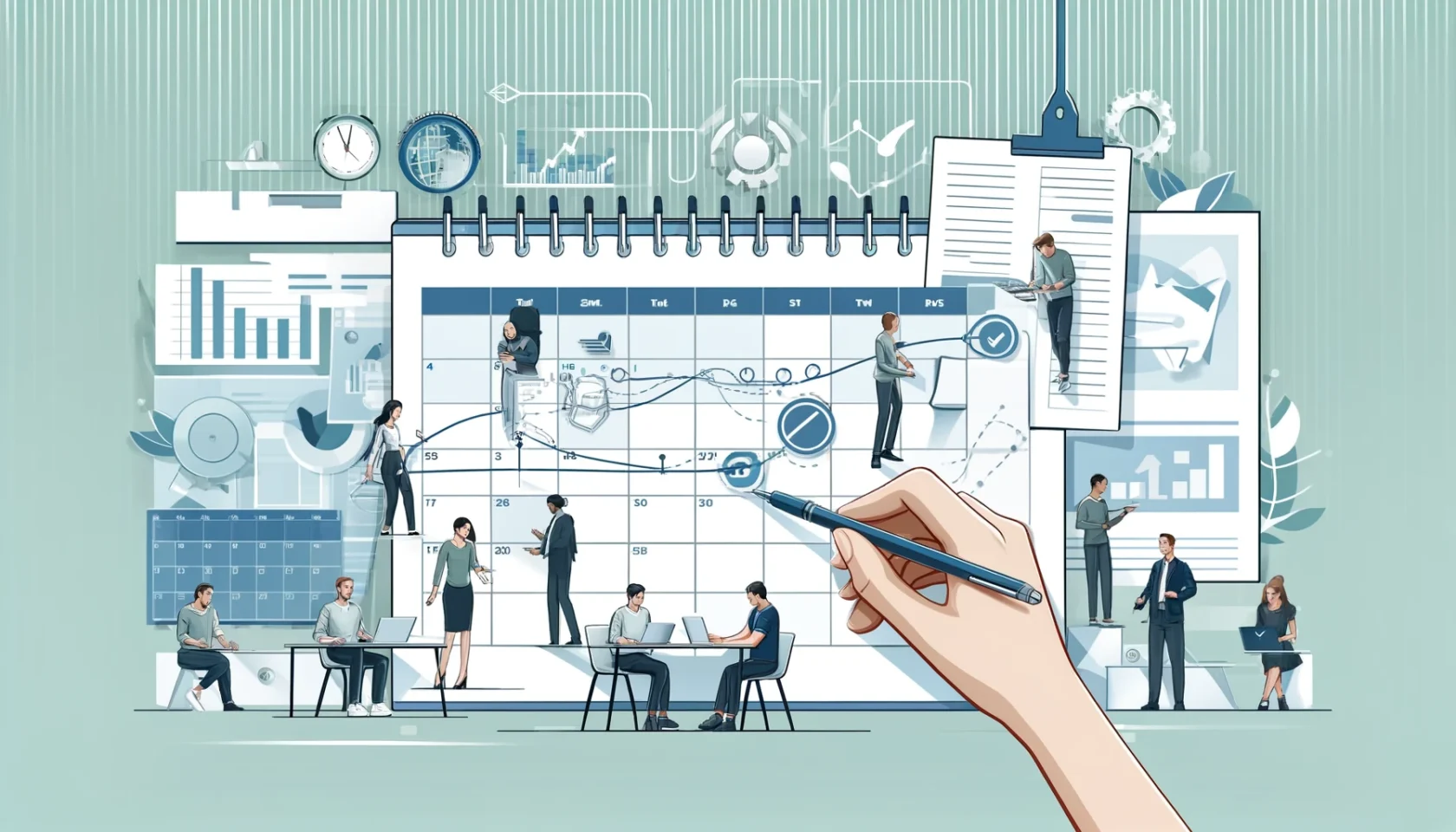
4. Prioritize Tasks Effectively
Task prioritization is among the best ways to put everything in a neat row and make sure that projects remain on time. The first thing you need to do now is identify what tasks are paramount and have to be addressed right at the moment—these tasks can be denoted as the ones that make a project’s success and progress hit a milestone or otherwise. These tasks prevent bottlenecking and delays while still helping the project proceed.
The highest practicality in organizing what is to be done and putting those in order of urgency can be done best through tools like Kanban boards and priority matrices. One can know at what stage every assignment is at and hence what stage it is at to establish its priority. These columns can be categorized as “To Do,” “In Progress,” and “Completed,” which show you, in a straightforward manner, what should be treated as a priority and be put as a back-burner task for now.
Another strong effective prioritization tool is the priority matrix, such as the Eisenhower Matrix. This method develops four categories of tasks: important and urgent, important but not urgent, urgent rather not important, and neither urgent nor important. Through the systematic placement of each task in one of those categories, you will now be able to prioritize your workload. Look first at those that are of critical importance and are urgent, followed by the important but not particularly urgent. Jobs that are urgent but clearly not important may be delegated, while assignments that are neither important nor urgent may be rescheduled or dropped entirely.
Team members tend to be more engaged and driven to meet deadlines if they know and understand why a particular task is assigned priority. In a collaborative process, everybody is on the same page and evidently moving towards the success of the project.
5. Use Time Management Techniques
Time management can help you get more done in less time, reduce stress, and end up balancing your work with the rest of your life. Some proven techniques of managing time include the Pomodoro Technique, the scheduling of time for blocks, and an Eisenhower matrix.
The usual Pomodoro work is done in a focused 25-minute session, followed by a very short break. It will help you maintain a level of focus that won’t wear you out, and it will help you arrange your work in small, digestible chunks. Lastly, you reward yourself with a longer break to do just that: get re-energized. This approach is very useful for handling assignments that need lots of mental focus since it can let you make significant steps without being stressed.
Another technique is time blocking, where you plan specific blocks of time for specific tasks or projects within your day. The method ensures that it is scheduled when the time should be dedicated to each activity without distractions from other responsibilities. It helps one stay organized and focused on achieving the work. You would start by planning the time for the most important tasks or projects during your peak productivity hours, and then fill in the other time with the less critical work, ensuring you have a balanced, productive day.
The Eisenhower Matrix, also known as the Urgent-Important Matrix, is the technique by which you can manage your activities based on the priority of that activity. It allows you to classify your activities into first, which needs attention; second, which is important but doesn’t need much attention; third, that needs attention first but is not important; and lastly, an activity that you can do without. Consequently, you will be directed towards matters of substance clearly and avoid becoming stuck performing activities with less importance. You will have to tackle the tasks that are important and urgent first, followed by those tasks that are important but not urgent. Delegate what is urgent that is not of importance, and possibly eliminate what is not either urgent or important.
Encouraging your team members to practice good time management is one more way to increase overall productivity. They should be motivated to use similar techniques, and time management strategies should be talked over as a part of routine by the team. In general, it creates a culture of working on efficiency and accountability with each other, so that everybody works toward the same objectives. With such time management techniques in action, one is more productive, free from distractions, and thus attains greater results from their projects. The Pomodoro Technique, time blocking, and the Eisenhower matrix are a few ways to manage time more effectively.

6. Communicate Regularly with Clients
Regular conversations with clients will help develop a trust-based relationship, keep it on track, and avoid threats of misunderstandings or improper expectations. Communicating the status of projects regularly to your clients promotes transparency and collaboration. Continuous dialogue will help you identify any issues or changes immediately with assurance that the project is on schedule and avoiding potential threats that may arise.
This, in turn, will give you increased ability to communicate seamlessly with your clients via SuperOkay. All communication will be made in this space, at the project level, where you can share any updates, progress reports, or any documents of relevance. The clients can enter at any time to verify the status of their project, the milestones of the project, and everything that was done previously. Such transparency keeps the client informed and, by consequence, involved and connected within the process.
Engaging the client over the life cycle of the project is very important. Schedule weekly or bi-weekly meetings and touch points to discuss the status, shifts, or modifications and the way forward. Such meetings should help re-emphasize the objectives of the project, get feedback, and make any such appropriate changes. Interaction with the clients over time will either lessen their feeling of being kept in the dark or make them more content with direction and results.

7. Track Project Progress and Milestones
Progress monitoring and setting milestones are some of the practices that become very essential in determining the development of your project at every stage towards its completion. By breaking down the project into smaller and manageable phases, one is able to keep the vision of the overall development and pinpoint where the problems might occur in the future. The milestones work as checkpoints that develop in you the capability of assessing whether a project is on schedule and hitting the set targets. Such a structured approach allows effective management of resources and provides grounds to make good judgments on any required adjustment.
You can improve your overall view of the project through the use of tools like Gantt charts and progress trackers. The Gantt chart represents a project timeline by depicting tasks, start and end dates, their dependencies, and a graphic description of progress. Such graphical representation enables you to understand how one task might affect the other, how task timings may overlap, and how the delay in one may affect the schedule. On the other hand, progress trackers provide a real-time snapshot of work done against what remains in a given task.
Quickly and seamlessly share updates with your clients using SuperOkay features set in the client portal. Set project Action Items so that key dates and deliverables are known to everyone. This transparency goes a long way with clients and builds trust in your ability to manage a project.
8. Delegate Tasks and Responsibilities
Delegation helps to spread out the workload and empowers the employees with owning their roles through a developed sense of accountability and engagement. Team members are likely to make a worthy contribution toward the successful accomplishment of the project if they are engaged in work they are skilled at and that interests them.
Delegation of tasks can be done in the most effective way by knowing the strengths, weaknesses, and availability of each member. Understand their skills and assess their current workload for tasks that you can assign them, but they can handle easily and not become burdened. There is clear communication regarding expectations, deadlines, and the scope of the work required so that each of them knows what is expected. Holding frequent check-ins and feedback sessions can clear bottlenecks early and provide support.
SuperOkay makes delegating activity across your team much more comfortable and keeps you in the know about what they are doing. Use Action Items to keep tabs on the tasks assigned, set deadlines, and monitor progress. With Action Items, team leads can easily know what every individual is working on and how far they’ve come. This helps us make sure things are on time and problems are recognized and dealt with on time.
SuperOkay provides a variety of collaboration tools that enable smooth communication between the team members and, therefore, easy coordination.
9. Utilize Project Management Software
Project management software would be very beneficial in learning how to stay on top of projects by giving us tools for task delegation, timelines, and communications. Project management software lets you oversee your projects, trace them in real time, and avoid pitfalls like missed deadlines.
Trello uses visual boards and cards to help you manage your tasks and workflows, so that you can see at a glance what needs to be done immediately. Asana adopts a much more detailed approach in task lists and project timelines. All in all, this improves efficiency and productivity, with a very high degree of transparency and accountability in the project. A well-coordinated project management system helps ensuring quality results, keeping your clients informed and satisfied in every step of the project.
10. Conduct Regular Project Reviews
A regular review of projects is effective in identifying what is going well and what can be improved. Periodic reviews will help you step back and make the assessment related to the progress of the project in regard to goals and timelines. You can clearly see if the strategies you adopted are useful, and decide what changes you need to make. Regular reviews keep a check on the status of the project and proactively look for potential issues.
Use feedback from the team and the clients to get a good grasp on the strengths and weaknesses of the project. A comprehensive approach will make it easy for problem areas to be identified. The identification of such problems allows for adjustments to be made promptly, which is essential in keeping the project going .
A cycle of continuous improvement in each project allows you to learn and apply in the future, improving your results, which in turn boosts the quality of work and client satisfaction.

Conclusion
Learning how to stay on top of projects is essential for freelancers and digital agencies to ensure successful project completion and client satisfaction. By adopting these 10 strategies, including using a comprehensive client portal like SuperOkay, setting clear goals, and maintaining effective communication, you can manage multiple projects efficiently and deliver outstanding results. Implementing these practices will not only help you stay organized but also enhance your professional reputation and client relationships.
FAQs
How can SuperOkay help me stay on top of projects?
SuperOkay provides a comprehensive client portal that centralizes project management tasks. It offers tools for task management, file sharing, time tracking, and seamless client communication, ensuring that projects stay organized and on track.
What are the key features of the SuperOkay client portal?
SuperOkay’s client portal includes customizable project templates, task management, file sharing, time tracking, and centralized communication. These features help enhance project management and improve client collaboration.
Why is project management important for freelancers and digital agencies?
Project management is crucial for ensuring that projects are completed on time, within budget, and to the client’s satisfaction. It helps organize tasks, manage resources, and track progress, leading to successful project outcomes.
How can I manage client expectations effectively?
Managing client expectations involves clear communication, setting realistic deadlines, and providing regular updates. Keeping clients informed and involved in the project helps ensure their satisfaction.
What are some time management techniques that can help with project management?
Time management techniques such as the Pomodoro Technique, time blocking, and prioritizing tasks can help improve focus and productivity. These techniques ensure that important tasks are completed efficiently.
How can I handle project changes and scope creep?
Handling project changes involves having a clear process for managing changes, communicating with clients, and adjusting the project plan as needed. Keeping clients informed and setting expectations helps mitigate the impact of scope creep.
Are you already using a Client Portal? SuperOkay gives you 1 client portal free forever to start creating professional-looking Client Portals, custom branded to your clients’ brands – Start today by clicking here!

How to Stand Out (with Custom Client Portals)
As a freelancer, learning how to stand out in a crowded market can be a challenge. With so many other freelancers vying for the attention of potential clients, it̵…

4 Reasons To Use Project Management Software with Client Portal
Collaboration plays a crucial role in successful project management. Effective teamwork, communication, and coordination among team members and stakeholders are essent…

Project Management Tools: Learn How To Implement Them
In today’s fast-paced business environment, effective project management collaboration tools have become increasingly vital for organizations aiming to streamlin…

Social Media for Agencies (And How to Use It)
Social media is a powerful tool for agencies to connect with potential freelance clients. It provides an efficient way to quickly and easily reach out to target audien…